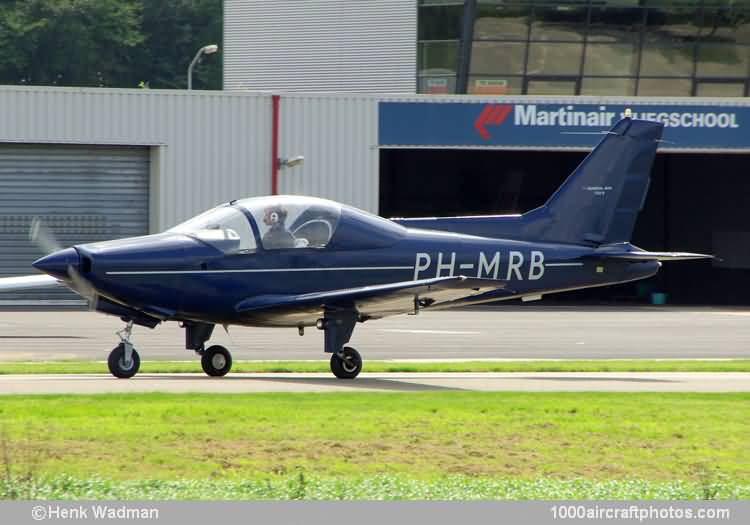The first prototype, with a fixed landing gear and an 116 hp Lycoming O-235-2NC engine with a fixed-pitch propeller, was first flown on June 13, 1989, registered I-GEAD (c/n 001). A second prototype had a retractable landing gear and an 160 hp Lycoming O-320-D2A with a constant-speed propeller, registered I-GEAE (c/n 002) this was flown on November 16, 1990.
F.22A Pinguino: Similar to the first prototype. Like all other versions, it was fully aerobatic.
F.22B Pinguino: Very similar to the F.22A, but was fitted with an 160 hp Lycoming O-320-D2A with a fixed-pitch propeller.
F.22BV Pinguino: F.22B equipped with a variable-pitch propeller, at least one sold to Germany in August 1997, registered D-EDMJ (c/n 013).
F.22C Sprint: Fitted with an 180 hp Lycoming O-360-A1A engine with a constant-speed propeller and a retractable landing gear, the first, registered I-GEAH (c/n 005) flew May 7, 1993.
F.22R Sprint: As F.22C, but with an 160 hp Lycoming O-320-D2A engine with a constant-speed propeller.
General Avia ceased production in 1998 and at that time reportedly six of the F.22 aircraft were on the production line, but not completed.
The pictured aircraft came factory fresh on the Dutch register as PH-MRB on October 27, 1997, registered to Transal Aero Services at Arnemuiden. Within a year it was registered to the Rotterdamsche Aero Club, Rotterdam on August 4, 1998. On May 8,2007 it was registered to the company J. Valk Beheer at Wervershoof, again within a year it was registered to Wings over Holland, Lelystad on April 15, 2008.
Sometime after it was pictured, the aircraft received some attractive stripings and was used by a private pilot for aerobatics.On August 16, 2012 the pilot took off for a forty minutes aerobatics training, thirteen minutes into the flight the aircraft was seen flying level after which the nose slowly dropped until the aircraft crashed vertically into a field near Biddinghuizen. The pilot was killed and the aircraft was almost consumed by post-crash fire. Post-mortem investigation revealed that the pilot was most likely incapacitated by a medical issue."
Lost in Translation (by Dr. Ing. Alfredo Scoti, Sequoia Aircraft, Richmond, Virginia, USA)
The translations of product names to other languages has been a notorious problem over the years. When ESSO was considering a new name, they found that one name they were considering meant "go slow" in Japanese.
When Stelio Frati first designed the F.22, he was going to call it the Turbiné, which is the Italian word for whirlwind or hurricane. It makes sense in Italian, but pointed out at the time to Frati that the name would be read as turbine in the USA and that people would make jokes about how silly the Italians are to pick such a name for a piston-engined airplane, and the potential problem of line crews putting jet fuel in an airplane that is clearly marked turbine.
So Frati changed the name to Pinguino (Penguin), and later models to Sprint. But what Italians know and what is lost on the rest of the world, is that "Pinguino" is the nickname they use in Italy for student pilots, who are, indeed, flightless birds.
